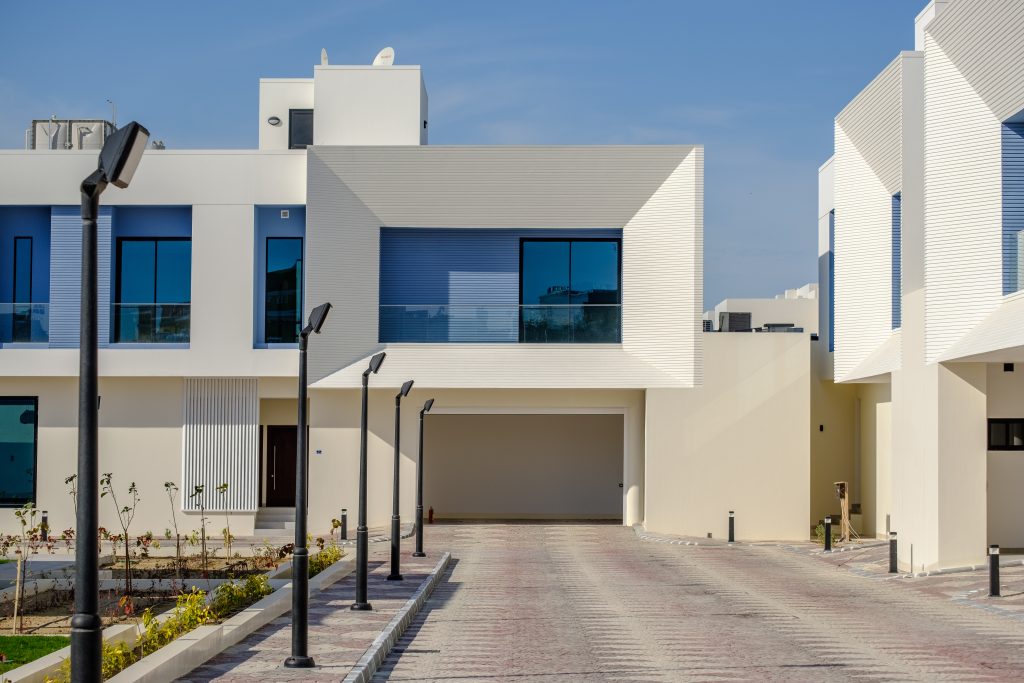In Saudi Arabia, particularly in the bustling city of Riyadh, a significant number of property owners are revitalizing their assets to capitalize on the burgeoning property market, according to industry experts.
These enhancements and updates to properties are resulting in substantial increases in rental income, with a potential rise of 25 to 50 percent in areas that have seen stagnant market trends—except for Riyadh, which accounted for 44 percent of the nation’s property dealings.
Older structures, including apartments and shopping mall units dating back 30 to 40 years, are experiencing a dip in rental yields due to the influx of modern buildings. To counter this, some residential buildings are being repurposed into office spaces, exploiting the high demand in Riyadh’s near-saturated commercial sector.
Market analysis by Knight Frank highlighted a modest uptick in villa and apartment prices in Riyadh by 0.5 percent and 4.5 percent, respectively, last year. Meanwhile, Jeddah, the next largest market, witnessed a decrease in prices. Since 2020, apartment prices in Riyadh have surged by 57 percent, with villa prices increasing by 32 percent over the same period.
Taimur Khan, a research leader at CBRE for the MENA region, anticipates “relatively strong price growth” in Riyadh’s real estate in the near future.
Office rents in Riyadh are also climbing at a notable rate, with government policies to establish regional headquarters in the city pushing up prices and leading to early leasing of new constructions.
“We are seeing old stock, like commercial spaces and malls from the ’80s and ’90s, being retrofitted and transformed into modern spaces,” remarked Hattan Alsharif, a senior research manager at CBRE.
Notably, Riyadh is experiencing a population boom and an upsurge in office space demand, outpacing supply. This has led to the identification of numerous “underperforming assets” in the city, which include properties in prime locations that are underutilized or not yielding expected returns due to inefficiencies and high operational costs.
An asset’s energy consumption can be significantly reduced, and its facilities management improved through retrofitting, as noted by Chestertons, which is crucial for maintaining its value and functional efficiency.
Properties that were previously neglected are now receiving makeovers to attract new tenants and command higher rents. These include a variety of buildings such as hotels, shopping centers, office blocks, and residential units, according to Kevin Duffield of Chestertons’ Riyadh office.
While the age of some buildings dates back to the 1970s, even more recent constructions may suffer from design or operational flaws that have led to their underperformance. The location of a property can also significantly affect its success, with commercial buildings sometimes situated in areas more suited for residential units.
Alsharif notes that this trend of upgrading and retrofitting has been apparent for the last couple of years across all major cities in Saudi Arabia, not just Riyadh. Older malls are incorporating food and beverage options and children’s play areas, aligning with modern consumer expectations.
The need for refurbishing properties comes at a time when commercial space demand, especially in Riyadh, is at an all-time high, with rents experiencing a sharp increase. CBRE’s Q4 report stated that rent for prime office space in Riyadh rose by a staggering 20.7 percent last year.
New government regulations requiring international companies with government contracts to have their regional headquarters in Saudi Arabia have led to a commitment from around 350 international businesses to establish a presence in Riyadh. Consequently, occupancy rates for Grade A offices in Riyadh are nearing full capacity.
The construction boom in Saudi Arabia is set to continue, with the real estate market expected to pick up in the coming years. A vast amount of infrastructure, valued at nearly $1.3 trillion, has been planned since 2016, with contracts approaching $250 billion awarded in the past year alone.
According to Knight Frank, the kingdom aims to construct 660,000 homes over the next six years, which is comparable to the entire housing stock of Dubai. Additionally, there are plans for 289,000 hotel rooms, six million square meters of office space, and 5.3 million square meters of retail space, all in line with Saudi Vision 2030, a strategic framework to diversify the economy away from oil.
Real estate’s contribution to the GDP is projected to increase from 6 percent to 10 percent by 2030. This growth is fueled by demographic trends including a young population, with 63 percent under the age of 30, who favor modern living arrangements such as apartments and community-centric villas over traditional housing styles.
